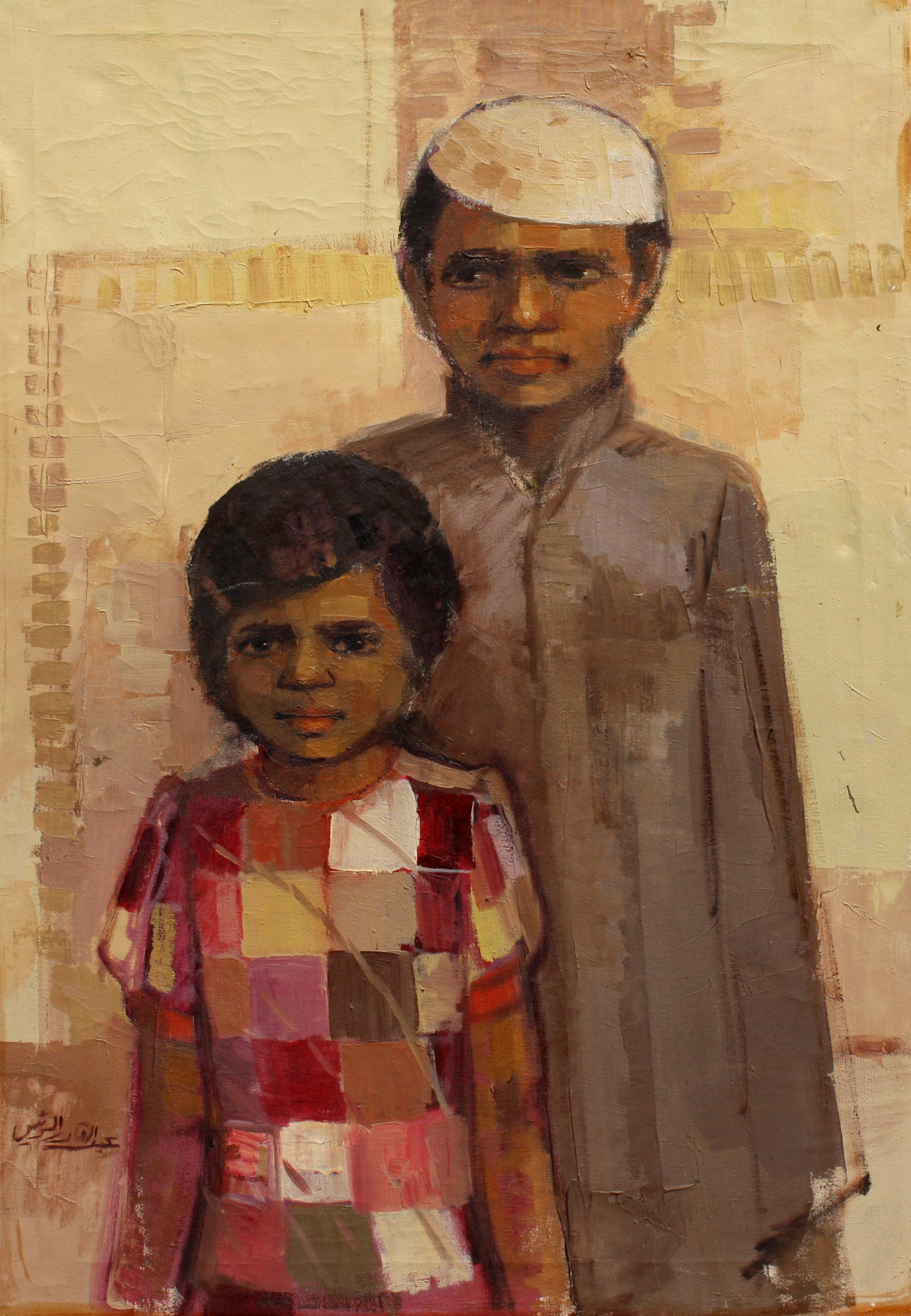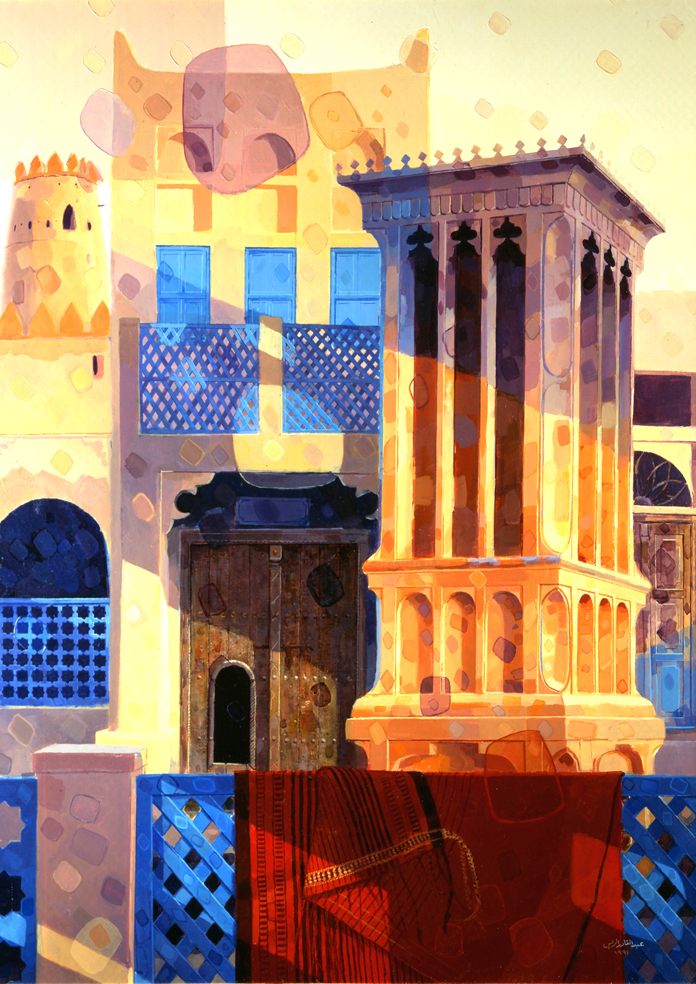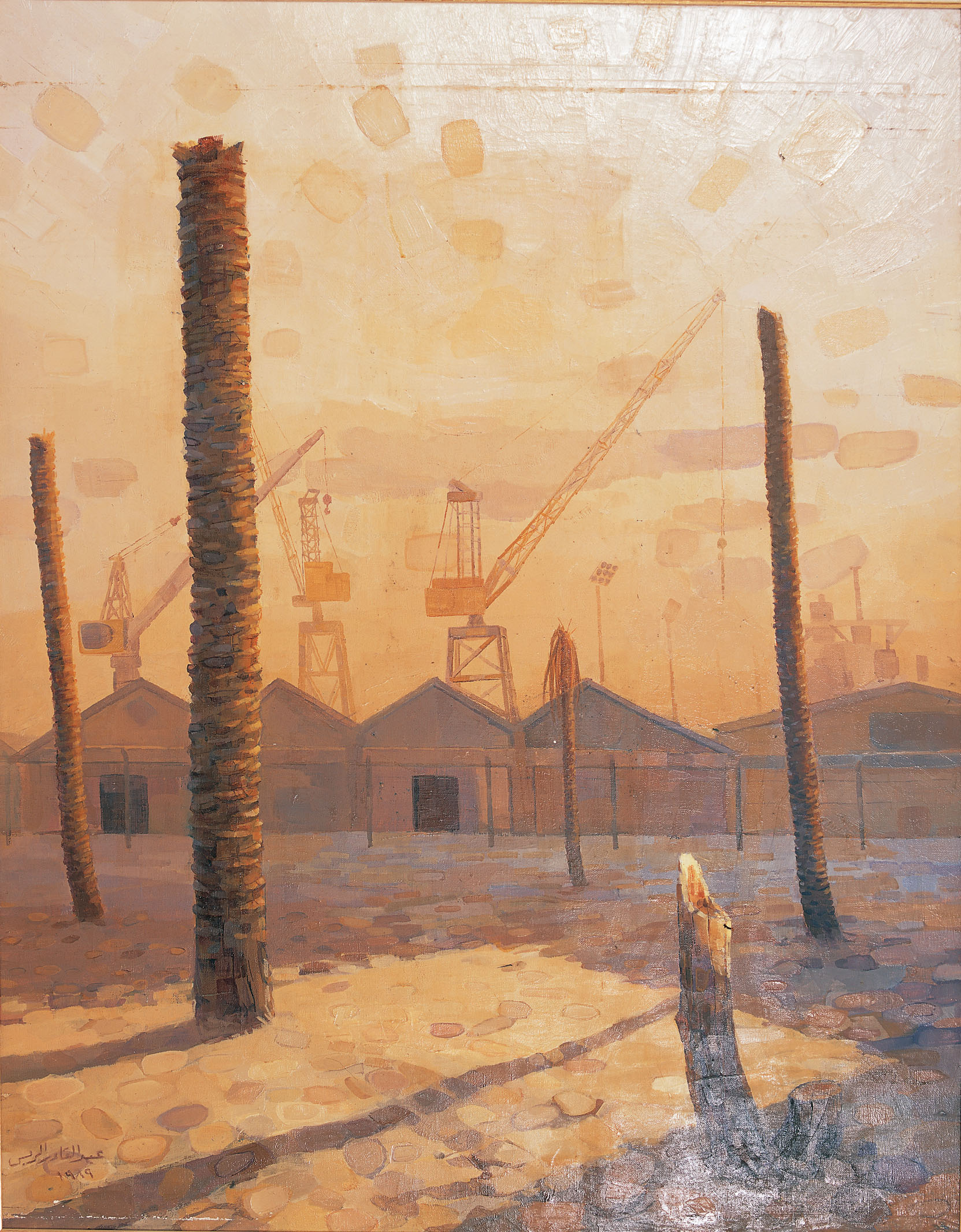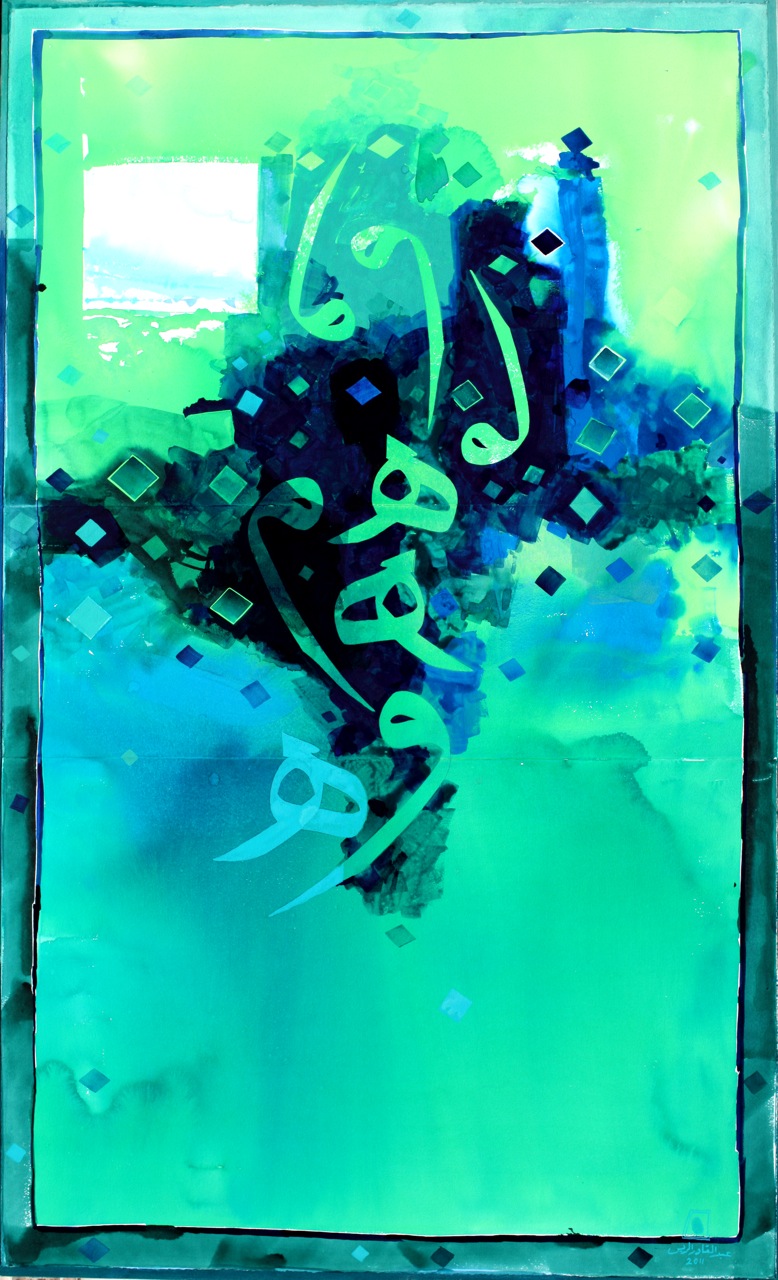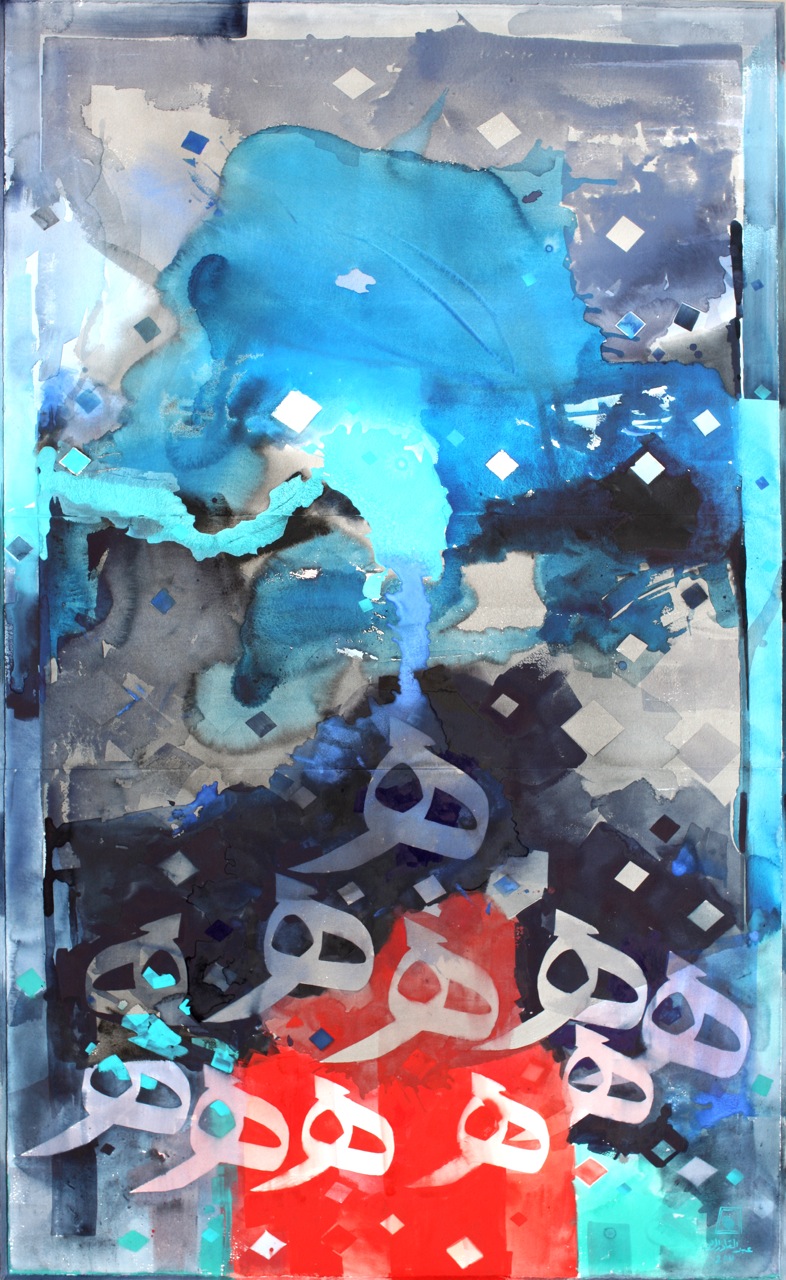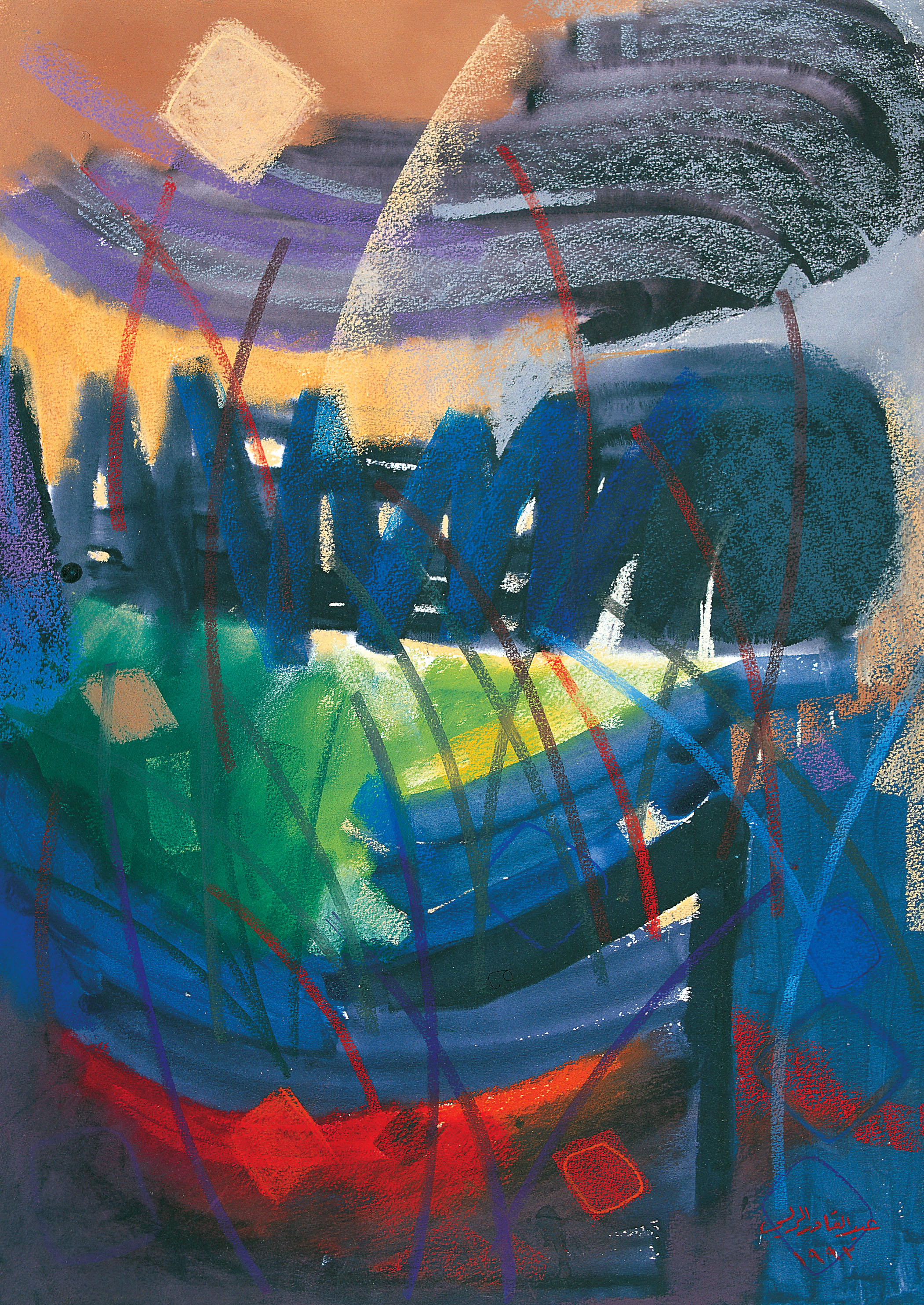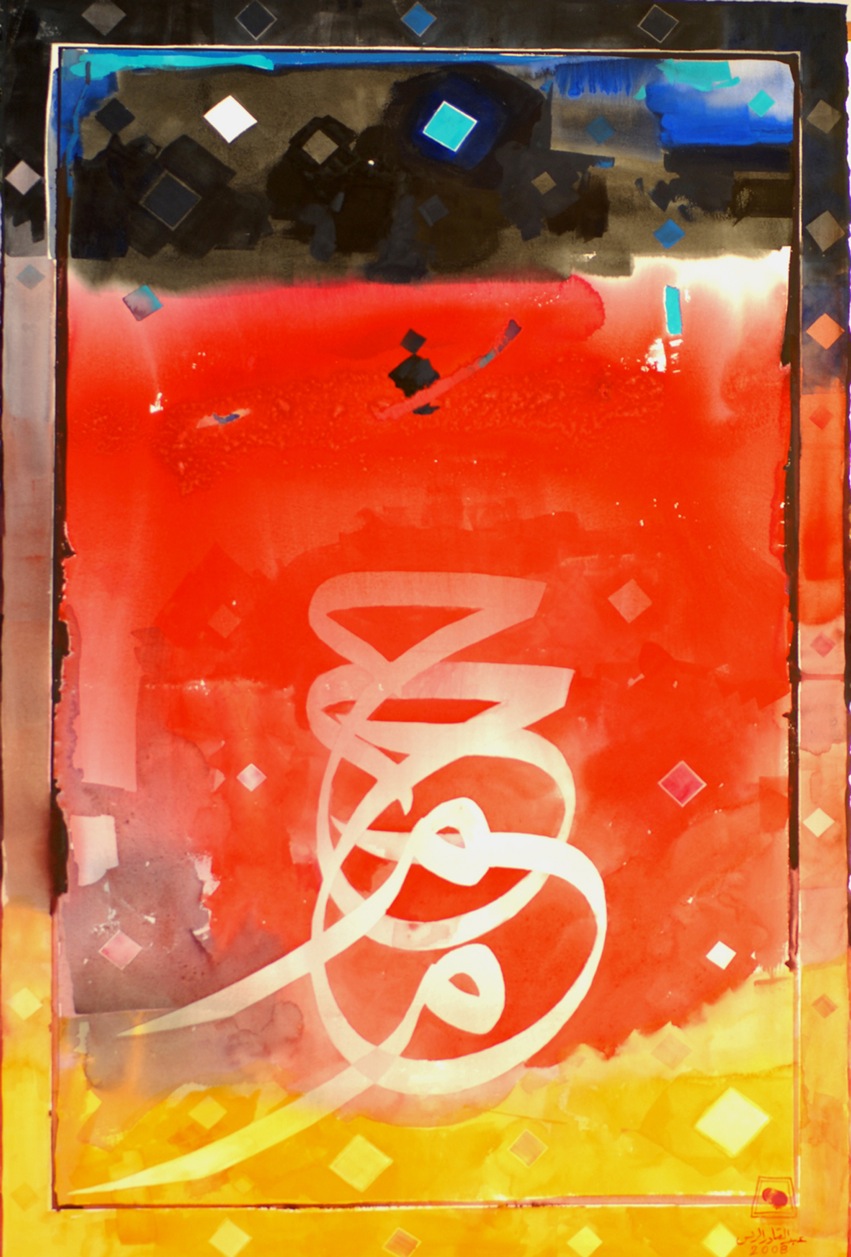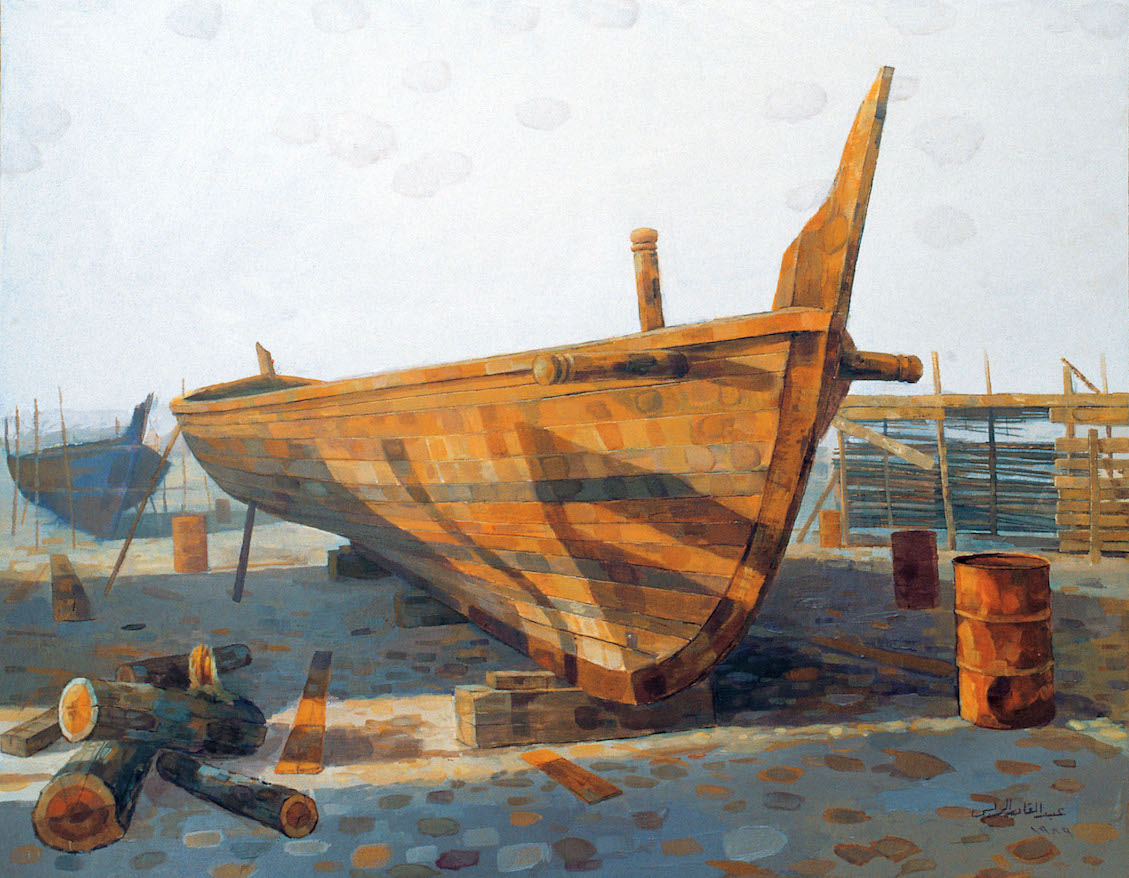Abdul Qader: Just a head’s up—I’m a very shy person in both English and Arabic. I don’t enjoy talking a lot. People really have a hard time interviewing me on TV because I don’t enjoy it!
Abdul Qader hands me two fresh cups of passion fruit juice squeezed from his garden.
MEA: Let’s begin then with childhood memories, that might be easier for you to speak about.
Abdul Qader Al Rais in Kuwait. 1970s.
Abdul Qader: If I stayed in the UAE I would’ve never have become an artist. All of these art developments that we know of today in Dubai, was originally in Kuwait. I’m lucky I moved to Kuwait as a child at 8 years old. This was 1959.
MEA: Where in Kuwait would you practice art?
Abdul Qader: I spent a lot of time in Marsam Al Hur, which was a space sponsored by the Kuwaiti government that allowed a group of artists to receive a salary for practicing art. In return for working at Marsam, the artists would give about 2 paintings a year to the government and they would participate in exhibitions.
Kuwait, 1970s.
MEA: What memories do you have of Marsam?
Abdul Qader: It was 1965 when I first shared my work in an exhibition with the artists in Marsam. In the same area, I participated in an arts program that combined arts and sports. They gave me so much art material like oil and brushes. In Marsam this was the first time I saw the art books of masters’ like Michelangelo and Rubens. I would look at these books without reading because at that point I didn’t know how to read English. I was reading the colors and learning how to create composition. I focused on portraits and still life. Rembrandt was like my teacher; I was studying from his books until 1966. In 1967, I began to change to Impressionism, learning from Degas, Monet and Pissarro. I especially learned from Degas’ pastels, while the light and shadow I learned from Rembrandt.
MEA: Did you exhibit with them?
Abdul Qader: In 1968 I was part of a touring exhibition with the Marsam artists around four European capitals: Athens, Madrid, London and Geneva. I submitted around 2-3 pieces, but was not representing the Marsam; the artists just thought I should get some exposure since I was still a student then.
Oil on canvas. 1960s.
MEA: Did you have close friends?
Abdul Qader: Sculptors Sami Mohammad and Jawad Boushahri. Sammi left for Cairo in 1970s for two years and then left for the US at the College of Fine Arts in San Francisco in 1973. Jawad was a teacher in secondary school back then. He allowed me to transfer schools because he wanted me to be with him. There is also another teacher with whom I learned under, may Allah bless his soul. He was making portraits for magazines and he was also an art teacher in the school. In 1967 I made a portrait for him in oil actually.
MEA: When were you first supported financially in the arts?
Oil on cardboard, 1986. Collection of Sammi Mohammad.
Abdul Qader: The first painting I sold in my life was in 1968. It was from a European. He came to my studio with another photographer, Oscar Mitri. Oscar was actually just awarded the Sheikh Hamdan Bin Mohammad Bin Rashid Al Maktoum International Photography Award Grand Prize last year. Sheikh Saad Al-Salim Al-Sabah, may Allah bless his soul, also bought two of my paintings for his palace.
MEA: When did you come back to Dubai?
Abdul Qader: In 1973 I came back and in 1974 I did my first solo exhibition in the UAE. I showed around 8 to 9 pieces. For that time, it was something out of the ordinary and the local public loved it. Some of them bought the works; one was an engineer from Jordan, and another from Kamal Hamzah, one of the longest serving directors of the municipality from 1960s to 80s. In general, it was successful event.
MEA: What was a challenge for you?
Oil on canvas (1989) collection of HH Sheikh Hamdan bin Zaed Al Nahayan
Abdul Qader: Everything changed from that time until now. It wasn’t easy. People didn’t realize the importance of caring for or appreciating the artwork. We may assume all the Italians or French love art, but we see it’s only a few of them. It’s different from the French and here, but we must remember art is only for a few people. And to find those few people is very difficult. In the 1970s, no one would think of putting paintings in a house. People thought of other objects that were more important than buying art. But now with the oil boom-- everything is going up and people have enough money to buy and spend on art. For example, some countries are in really bad situations, but there is always somebody who loves art. And then you begin to explore the talented artists there. Since there are only a few people that buy art and support these artists, for that case, the art communities will always somehow grow.
MEA: I have noticed the most important part for an artist to begin is to be sponsored or supported by a collector who sees an artist’s vision. Supporters help foster and create this confidence in the long run. And it’s important to establish those collectors who see that. When you have to create a market, you need to build on the existing art history that is there.
The art history in the UAE has changed so quickly for each decade and since the galleries and auctions came, everything changed. It almost feels people have this nostalgia of what is before. So at least for me it’s important to see the different movements of art schools. It’s important for artists here now to look back at what the history was here in the 1970s and 80s. That’s why there are exhibitions now that are narrating this time. You had Hassan Sharif and his group, and then those like you who had this mix between impressionism and calligraphy, then the calligraphy group, and then those who painted realistically.
MEA: When the EFAS was formed in 1980 did you have a big role in that?
Abdul Qader: I was there only for a short time. It was a long drive from Dubai to Sharjah so I lost a lot of time. It was better if I painted instead of wasting my time traveling. At that time, it took about 2-3 hours (today it’s about forty minutes). But I always shared my artwork with their annual exhibition. I just preferred to work alone.
MEA: Which artists were you good friends with?
Abdul Qader: I’m on good terms with all of them – Dr. Mohamed Yousif, Abdul Raheem Salem, Dr. Najat Makki, Mohammad Qassab and Abdulrahman Zainal to name a few.
MEA: What about your memories of Abu Dhabi?
Abdul Qader: I made more artist friends especially when Abu Dhabi started to make their Cultural Foundation in 1981. HH Sheikha Salama is one of the biggest supporters of arts in the Emirates. If she wasn’t buying my art in those days, it would’ve been too difficult to continue, especially when you need to support your family.
MEA: Did you work?
Abdul Qader: Yes, at that time I was working in the Ministry of Labor until 1995. I started working after I finished high school. After 5 years I finished university at UAE University in Al Ain. I majored in Shariah Law.
MEA: How long did you stop painting?
Abdul Qader: It was 12 years, starting when I began my university education. I began painting again in the airport after visiting the Carolinas in the US. There was so much greenery that I wasn’t able to experience in the desert sands in the UAE.
MEA: Can you explain your watercolor practice?
Abdul Qader: In the Arab world, artists are not as strong in watercolor. I don’t have anybody in the Arab world doing work like mine. I began doing watercolor when I came out of my 12-year hiatus. It was 1987. I made small sketches of watercolor in Kuwait, but after 1987 I really was pushing myself. I actually learned how to paint watercolor in my office. At first my technique was like oil painting but I slowly began to understand how to use the material. I would do sketches with my hand and feet. It looked like oil paint.
MEA: You were exploring around Al Fahidi and these different areas in Oman too. Would you sketch out the outline and return home?
Abdul Qader: Most of the time, but sometimes I would sit in the alleyways. This was in 1974/73. When I used watercolor, it was so much easier for me since you didn’t have to wait for the oil to dry. When I was painting outside so many people would be looking at me. Some of them come up to me today and tell me they remember me painting in the alleys.
MEA: Who were some of the most instrumental people in supporting you to become an artist?
Abdul Qader: His Excellency Mohammed Al Mur, former Chairman of Dubai Cultural Council and former Deputy Chairman of Dubai Culture and Arts Authority is one of the most important. Also, Abdul Rahman Al Owais, our current Minister of Health. He is one of the biggest collectors of art in the UAE. Sheikh Abdullah bin Zayed also began to support me. One time he wrote on Twitter that Abdul Qader Al Rais is the master of impressionism in the Emirates. Also in his meetings, he put my paintings in there. Before I gave him just a small watercolour but he asked for a larger piece. It was 42 meters!
MEA: Why did you begin to use your fingerprints in your signature?
Abdul Qader: I started in 2008 because some artists began copying artworks. Watercolor is not easy for people to copy, but nevertheless I stamp my finger on all the canvases now.
MEA: What made you turn to this abstract style?
Abdul Qader: I did it because some people told me I didn’t know how to experiment with paint after focusing so long on realistic scenery. After doing it for a while I began to enjoy painting abstract versus realistic art. I even remember Hassan Sharif told me that after he saw this abstract art, he respected my work. It was such a liberating feeling for me to paint abstract instead of realistic.
MEA: Where did you feel most connected to with the arts?
Abdul Qader: Of course I’m passionate for the UAE because I belong from the UAE. When I was in Kuwait, I didn’t look like a Kuwaiti, nor did I feel Kuwaiti. I was the only Emirati in the Kuwaiti Art Society. Especially before the UAE was formed in 1970, most Kuwaitis think that I looked like them and they didn’t think any difference from me because I was from Dubai. This was because it was before Emirates was formed.
MEA: I know your children, Musab and and Sumaya are artists. Where did they study?
Abdul Qader: Abdul Qader University! They studied from me, but I’m a terrible teacher. After they learned the realistic art from me, they tried doing installation art. I’m not a fan of that type of art though. Most of them in installation art repeat other’s work.
MEA: What are daily habits when you create art?
Abdul Qader: In the morning I pray. This helps me to create the artworks, it gives me the soul to create. I take my breakfast and after that I paint. I need to be in the right mood. And I can’t be bombarded with too many other activities. When I receive work from Museums or the major painting project on the Dubai Metro…I get really busy on these public commissions. The work I produced for Etihad Museum was 9 pieces, it took up the whole house. I know some artists like Sammi Mohammad works more than 12 hours daily. If I work every day for 2 hours, I will be lucky. Alhamdilllah. Look at this today---the brush hasn’t moved since yesterday and it really annoys me!




